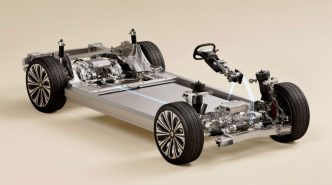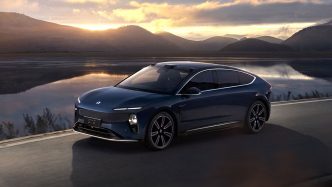Steer-by-wire (SBW) technology is revolutionizing the driving experience, particularly in electric vehicles (EVs), by replacing traditional mechanical steering connections with electronic systems. Nio, a leading electric vehicle manufacturer, has been at the forefront of this innovation, offering a detailed look at how SBW enhances vehicle performance and driver control. With this technology, the vehicle’s steering is managed by electrical signals, eliminating the need for a mechanical link between the steering wheel and the turning wheels. This advancement offers numerous benefits, including more precise control, greater efficiency, and increased flexibility in vehicle design.
How SBW Works and Its Advantages
The key feature of SBW technology is its ability to control the steering through electrical signals rather than mechanical linkages. This decoupling allows for more customizable steering systems, where the angle of the steering wheel and the resistance torque can be finely tuned. This flexibility results in lower delays, more responsive control, and improved transmission efficiency. Additionally, the lack of mechanical components means that the design and arrangement of the steering system can be more compact, offering better overall space utilization and reduced weight in the vehicle.
SBW technology also offers an enhanced driving experience by reducing road vibrations that typically travel through the steering wheel. In Nio’s ET9 model, for example, the SBW system filters out more than 80 percent of these vibrations, ensuring a smoother, more comfortable ride. Drivers can even customize the steering “road feel,” selecting modes that provide a smoother experience for long business trips or a more engaging, tactile response for everyday driving.
Nio’s Implementation of SBW in the ET9
Nio has successfully developed and tested its SBW technology, making the ET9 the first mass-produced vehicle to feature this system. After thorough industry reviews, including assessments organized by the Ministry of Industry and Information Technology (MIIT), the ET9 became a trailblazer for SBW integration in production cars. The SBW system in the ET9 is equipped with robust safety features, including redundant dual power supplies, communication systems, hardware, and software to ensure maximum reliability. Nio claims that the SBW system is 2.2 times more reliable than traditional Electric Power Steering (EPS), commonly used in most vehicles today.
The ET9’s SBW system also offers significant advantages in terms of space. Thanks to the removal of mechanical connections, the steering column can expand and contract by up to 153 mm—nearly three times more than conventional mechanical steering systems. This allows for a more spacious and comfortable cabin, particularly in the driver’s seat.
The Future of SBW and Its Role in Autonomous Driving
Looking ahead, SBW technology is poised to play a central role in the development of advanced autonomous driving features. Nio emphasizes that the system is crucial for enabling the integrated control of the car’s chassis, which is foundational for higher levels of intelligent driving. With the ability to make fine adjustments, such as a slight 10° turn of the steering wheel during automated parking, SBW supports the precise movements required for Level 3 (L3) autonomous driving and beyond.
Moreover, Nio’s SBW system is designed with multiple safety redundancies, ensuring that the probability of a steering failure is extremely low—estimated at just 4.5 FIT, or one failure every 25,368 years. As automakers push toward smarter, more capable EVs, SBW technology is expected to become a standard feature in future flagship models, further enhancing the driving experience and paving the way for fully autonomous vehicles.









